In Ethiopia, WFP is helping families to resettle, rebuild and reconquer their livelihoods, post-conflict
Hiwot Negasi – her first name meaning “life” in the Ethiopian language of Amharic – describes how her life literally changed overnight when war broke out and her family’s home in Western Tigray was invaded at the end of 2020.
“Before I came here, my life was very good – I was educated well, and I worked as a secretary in a school,” she says.
Negasi, aged 27, has been living in the Sabacare camp for internally displaced people on the outskirts of Mekelle, the capital of Ethiopia’s Tigray region, for the past three years. With little shelter or food available in the camp, it’s the rainy season (June-September) she dreads the most.
“You can understand from my face and my cough, that we’re barely surviving here, with little food. We face disease and illness, especially when it’s cold and rainy,” she says.
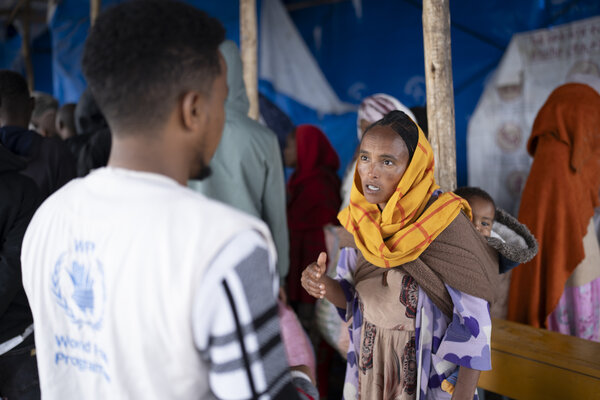
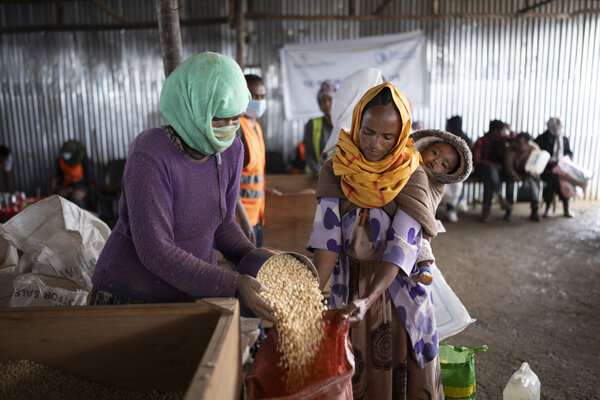
The World Food Programme (WFP) provides food assistance to the most vulnerable families in Tigray, including around 400,000 people who, like Negasi, remain displaced. However, due to a lack of funding, WFP was forced to reduce monthly rations to 80 percent of the minimum required cereal portions. “Twelve kilos per person is not enough, but the distributions are regular now, and they are close to my home,” says Negasi. Portions are scooped and weighed at the distribution point, making it easier for people to know they are receiving the right amount.
WFP’s distribution system was revamped last year and includes a new digital registry of all food insecure families who are provided a digitally readable ration card. WFP is now also rolling out biometric registration and has strengthened its beneficiary feedback system – among a host of new measures and controls put in place last year to ensure food reaches the hungriest.
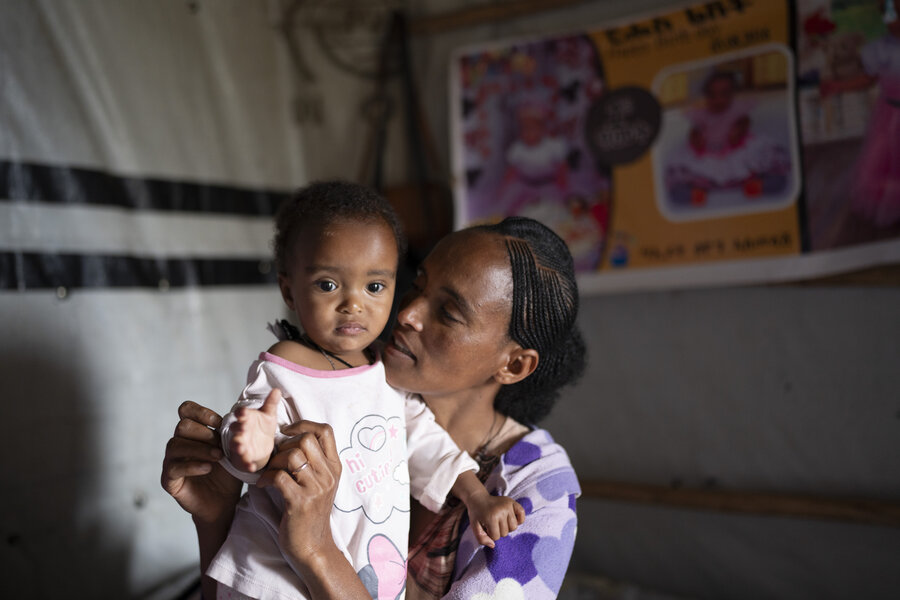
Negasi’s humble shelter is decorated in with “1st birthday” banners and photographs of her daughter Tigist whom she gave birth to in the camp last year. Throughout her pregnancy and first six months of breastfeeding Tigist, Negasi also received nutritionally fortified flour from WFP to prevent malnutrition.
Ongoing challenges
Two years since the peace deal put an end to two years of bitter conflict in Northern Ethiopia, WFP is helping families meet their urgent food needs - whether at their place of displacement or as they return to their homes. In September, WFP started providing immediate relief food for almost 20,000 returnees in southern and northwestern zones of Tigray. In October, WFP plans to assist more returnees as the numbers increase from both Tigray and Amhara regions.
However, humanitarian access in the north remains uncertain as armed conflict between government forces and non-state actors is escalating in the Amhara region, with an increase in drones and fighter jet activities. Many families who fled the war in Tigray two years ago to neighboring Amhara, are now returning home and leaving an entirely different war behind them. To reach them, WFP has to drive food items along perilous routes through conflict-affected Amhara region into Tigray. Ongoing security threats, including armed robberies, kidnappings, illegal checkpoints, truck hijackings and looting of food and nutrition commodities from trucks, severely hamper WFP’s distributions in Ahmara. Following months of consistently delivered food assistance, reaching on average 280,000 people every month, due to escalating conflict in September, WFP could assist only 159,000 people in the region.
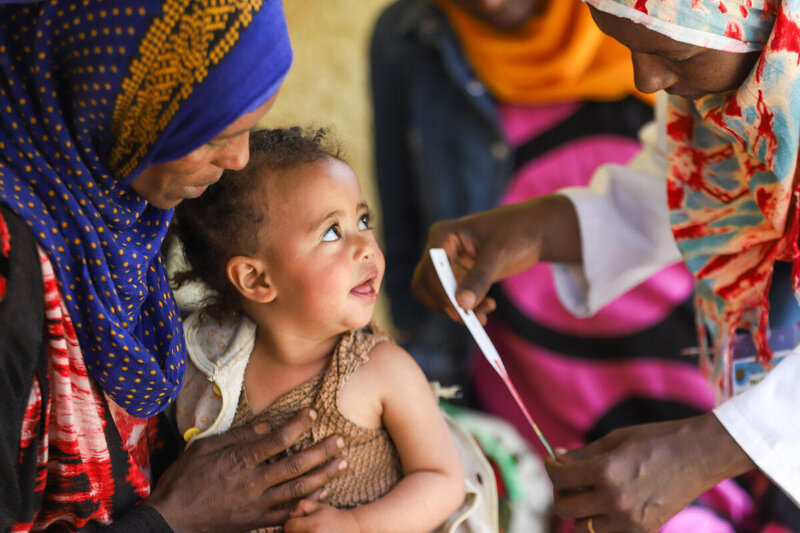
Helping livelihoods flourish again
Beyond responding to the emergency needs of displaced families and those facing severe hunger, WFP is also helping communities to rebuild their livelihoods in the wake of the end of the Northern Ethiopia conflict.
Since April, WFP and local NGO REST (the Relief Society of Tigray) has supported around 2,000 farmers in northern and southern Tigray to recover their agricultural output, which was lost during the war.
Lemlem Gebrekidan, whose name means to bloom and flourish in the Ethiopian language of Amharic, is a smallholder farmer and single mother of three children living in Raya Azebo district of Southern Tigray. Prior to the outbreak of war in 2020, she and her children had been happily self-sufficient – living off her sorghum plantation just three kilometres from her home.
“Because of the war, our children couldn’t go to school, we couldn’t go to our farmland and any livelihood activities were stopped,” says Gebrekidan. “The shelling was non-stop and I was worried about what to do with my children.”
Together with a neighbouring family, they sheltered in caves for days at a time, only returning home when it was safe to grab some of the remaining food stocks to share. “There was hunger because of the war, no electricity, we couldn’t go to market because we were scared,” Gebrekidan says.
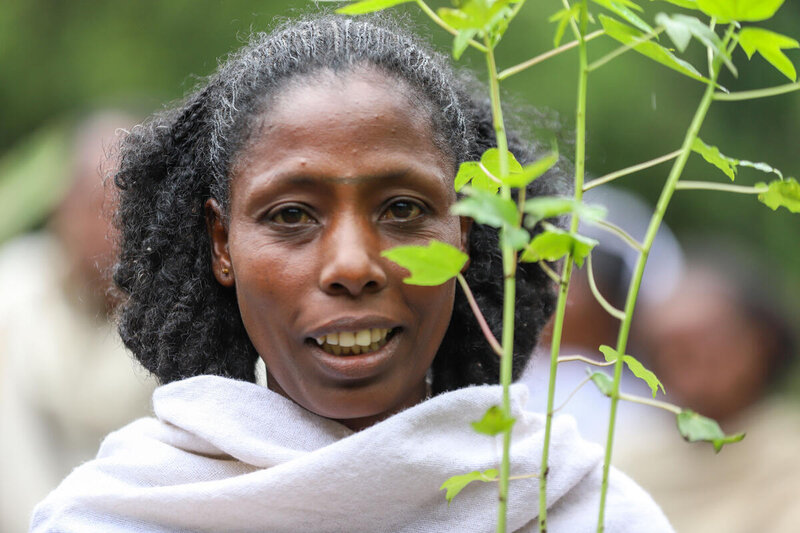
While WFP food assistance kept her going, she was devastated not to be able to tend to her own crops and feed her children. “I was so happy when peace came, but it was difficult to start again from nothing,” she says.
Prior to providing livelihoods assistance, WFP had conducted a thorough targeting exercise based on vulnerability, and digitally registered the most food insecure families throughout its areas of operation in Tigray, including Raya Azebo. WFP launched its assurance measures in this district and assisted over 100,000 people for months. In 2024, WFP shifted its focus to building their resilience and supporting them to rebuild their lives.
WFP gave Gebrekidan seeds to plant a garden filled with nutritious fruits and vegetables including Swiss chard, sweet potato, papaya and cow peas. REST came in with tractor support and delivered training on gardening, marketing and postharvest management. The farmers formed cooperatives and planted sorghum across farmland next to spate irrigation sites, newly restored or constructed by WFP and REST.
These allowed farmers to irrigate their sorghum fields in time for this year’s harvest in October. For some of them, it is the first time they are harvesting anything in three years.
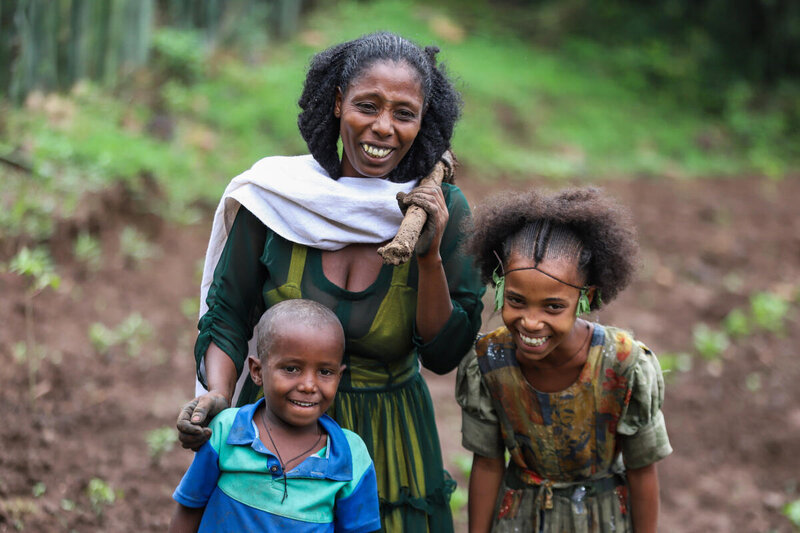
“This project doesn’t only restore people’s livelihoods,” says WFP Programme Policy Officer Ezgimelese Tecleab, who led on its development. “It represents a new hope for the future, especially considering the challenges communities in these areas have faced over the past four years. At least for the next 25 years, they will have water they can count on to increase their production and have a food-secure future.”
Back on her land, Gebrekidan feels optimistic. “In the training, I learned how to space the seedlings, how best to plant, cultivate and the importance of these nutritious crops,” she says. Her children are also getting involved in picking vegetables from her micro garden – an activity which has helped them as a family to recover from the physical and psychological impacts of the war.
“Now I’m getting income from these crops and my children have a varied diet – so it helps to strengthen their bodies. Now I have hope to change my life to a better life. I have relief from the psychological pain we suffered.”
Learn more about WFP's work in Ethiopia



